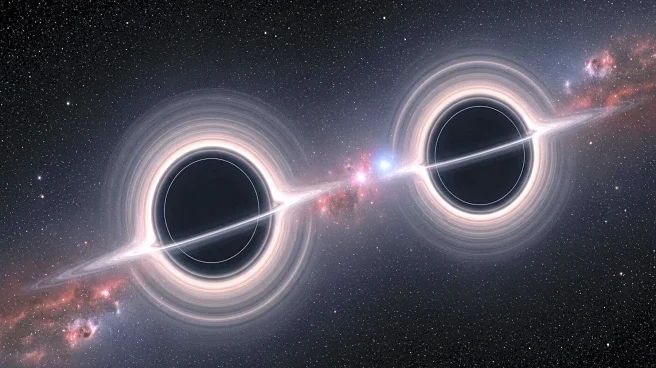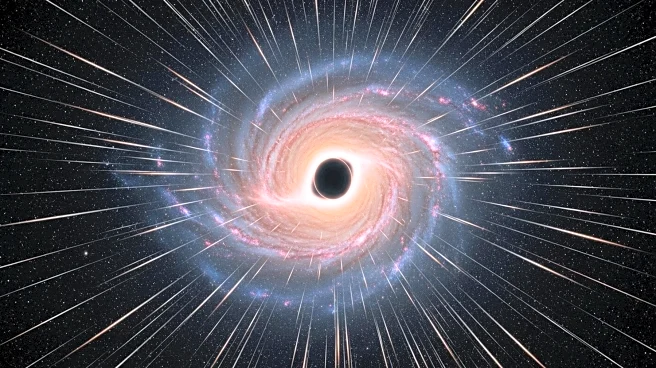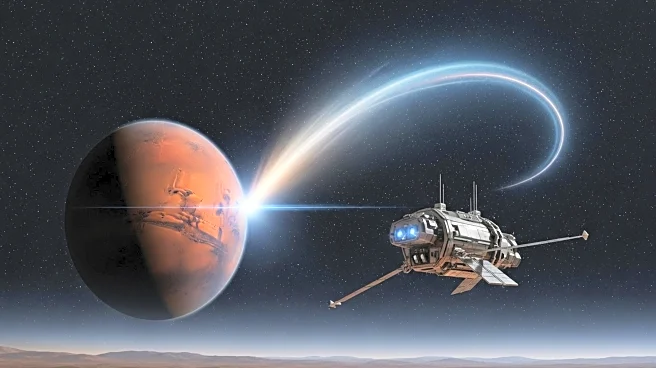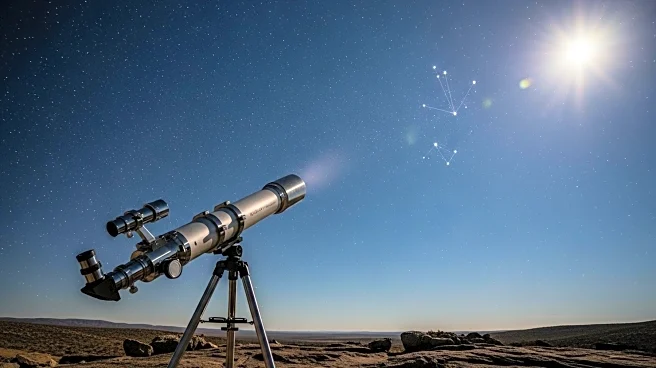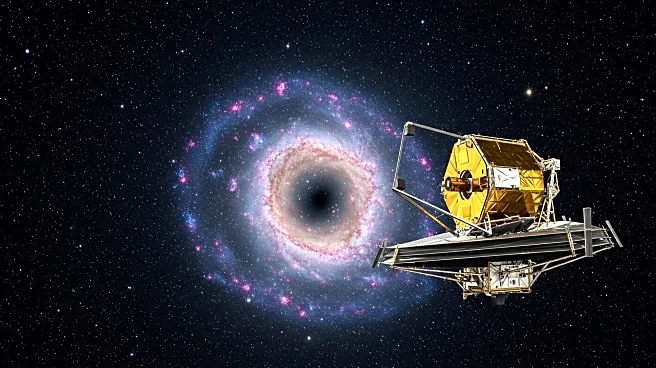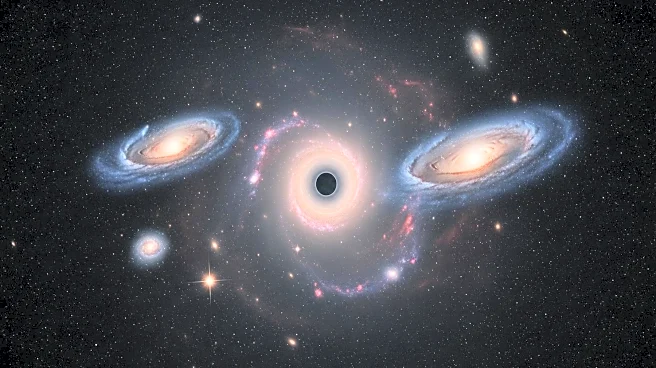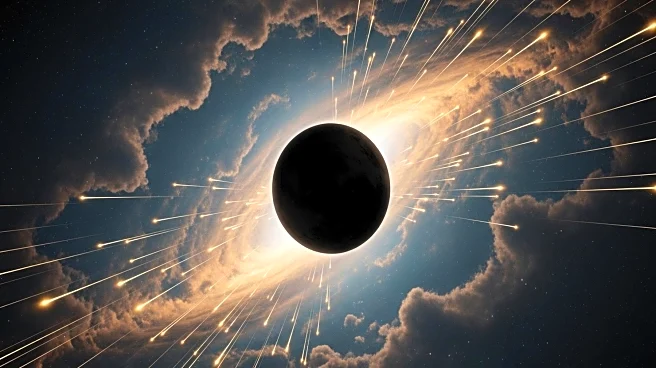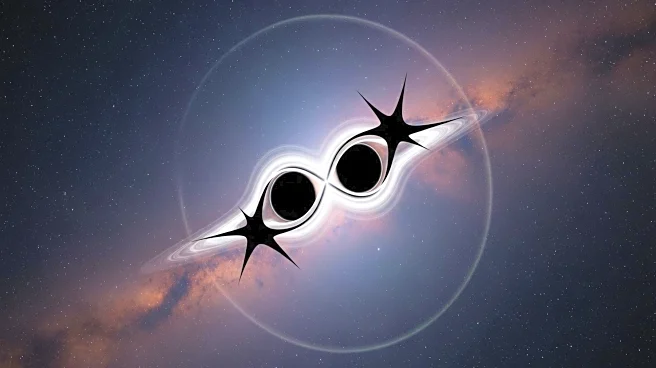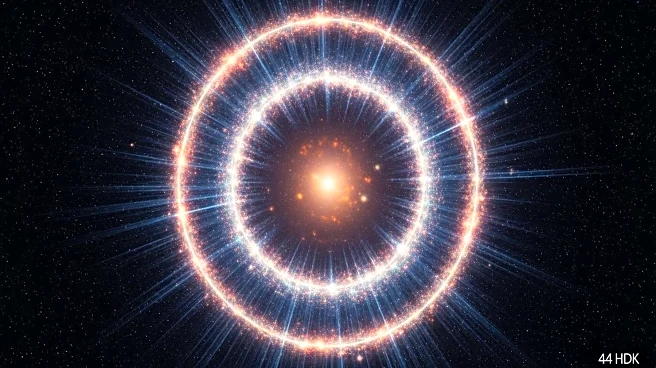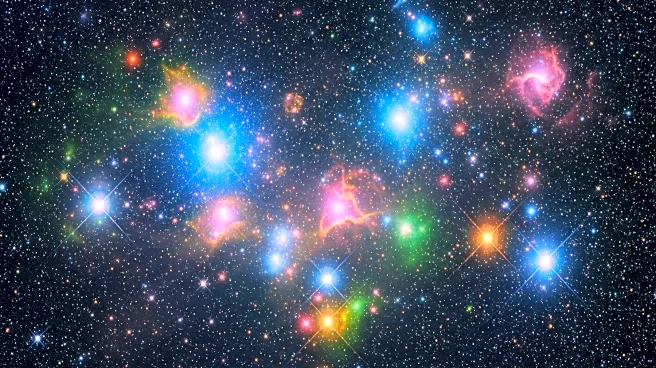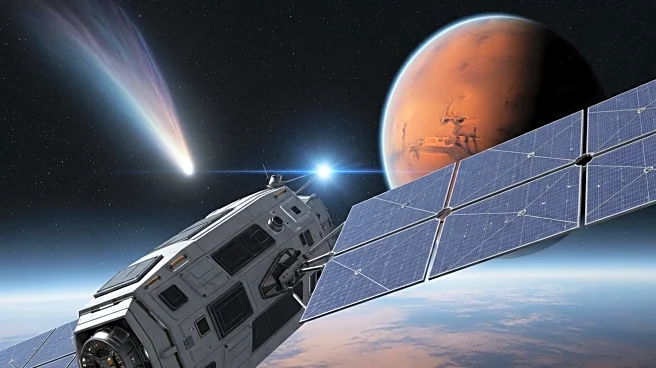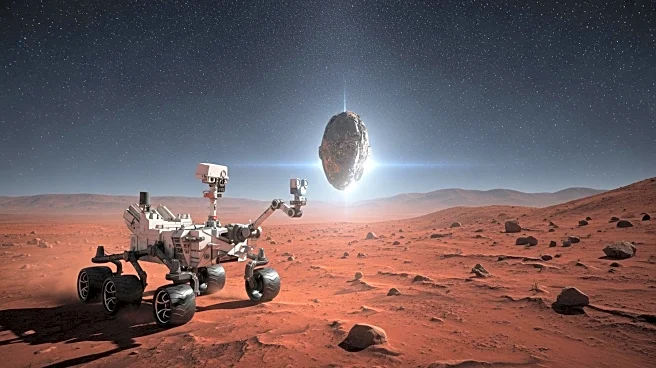What is the story about?
What's Happening?
For the first time, astronomers have captured a radio image showing two black holes orbiting each other at the center of a quasar called OJ287. This observation confirms the existence of black hole pairs, a phenomenon previously theorized but not visually confirmed. The international team of researchers used a radio telescope system, including the RadioAstron satellite, to achieve this high-resolution image. The study, led by Mauri Valtonen from the University of Turku, reveals the intense particle jets emitted by the black holes, providing insights into their orbital motion and the unique 'wagging tail' jet from the smaller black hole.
Why It's Important?
The ability to image two black holes orbiting each other provides valuable insights into the dynamics of black hole pairs and their role in galactic evolution. This discovery enhances our understanding of quasars, which are extremely bright galactic cores powered by supermassive black holes. The findings could lead to advancements in astrophysics, offering a deeper understanding of cosmic phenomena and the behavior of black holes. The research also highlights the importance of international collaboration in achieving scientific breakthroughs.
What's Next?
Future observations using radio telescopes will continue to monitor the motion of the black holes and the unique jet emanating from the smaller black hole. As technology advances, astronomers may be able to capture even more detailed images of black hole pairs, further unraveling the mysteries of these cosmic entities. The ongoing study of OJ287 will contribute to the development of theoretical models and enhance our understanding of black hole interactions.
Beyond the Headlines
The discovery of black hole pairs raises questions about their formation and evolution, potentially influencing theories about the lifecycle of galaxies. The unique 'wagging tail' jet from the smaller black hole offers a new perspective on the behavior of black holes and their impact on surrounding cosmic material.
AI Generated Content
Do you find this article useful?
